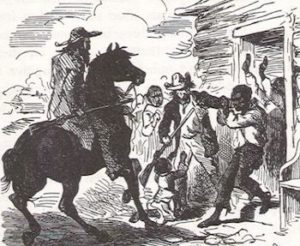
*On this date, 1852, the California Fugitive Labor Act was passed. Two years after California entered the union as a free state, this law lasted only three years.
Slavery in the territory of California had been a debated issue since Spanish conquistadors explored the region in the 18th century. The California Fugitive Labor Act was passed in Sacramento and unsuccessfully challenged in the Perkins escapee case. However, when the law lapsed in 1855, the Legislature failed to renew it, and the George Mitchell case in San Jose resulted in freedom for Mitchell, a runaway slave.
In 1856, Judge Benjamin Ignatius Hayes freed 14 slaves, including Biddy Mason, who had been held in slavery in a Mormon settlement in San Bernardino for five years, saying the slaves had been kept ignorant of the laws and their rights. In 1858, in one of the most protracted cases over the state-level status of slavery, Archy Lee resurfaced. He was a slave who had run away from his owner, Mississippi native Terry Stovall. He was arrested four times his fate as a slave bound to return to Mississippi with his master or continue residence in California as a free man. Three local judges and a United States Commissioner presided over. Lee won the case by supporting the local freed Black community in San Francisco.
To avoid further legal reprisals by his former owner, he fled to Canada, eventually dying. A backlash against these legal wins for the free Black community in California whipped up the State government to debate the Chinese Exclusion Act. Fearful of the hostile maneuvers against them, over 700 Blacks left California in a mass exodus via steamship for the women and children and mass migration for the men to Victoria, Canada, and the Fraser Canyon Gold Rush.